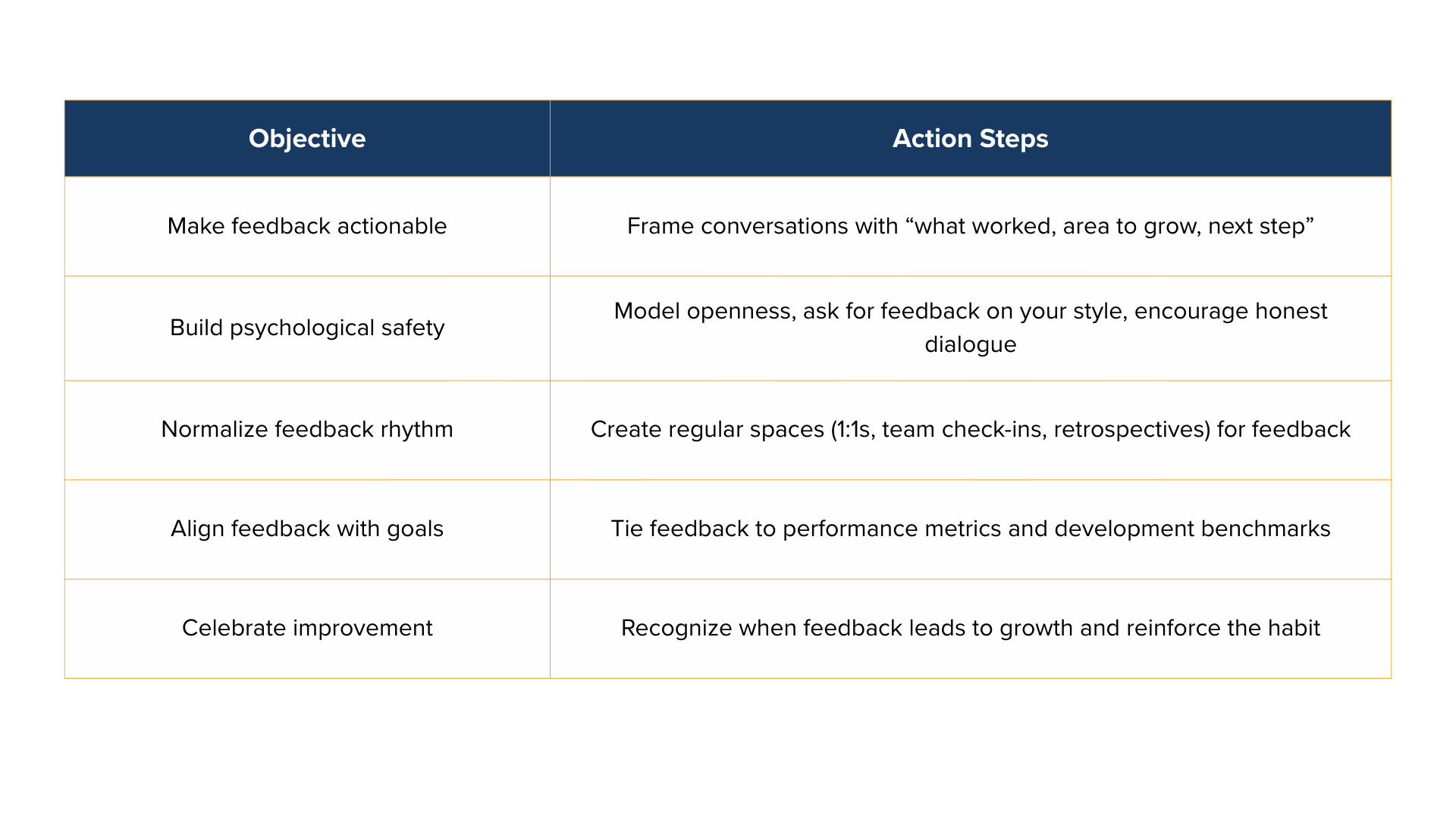Closing the Loop: How to Turn Feedback into Actionable Growth
Feedback shouldn’t end when it’s given. It should spark growth, insight, and change. But too often, feedback loops go nowhere: feedback is delivered, yet improvement stalls. As a result, performance conversations feel wasted and culture suffers. In this piece, I’ll share evidence-backed principles for closing the feedback loop—so organizations can convert input into meaningful, measurable progress.
Why Feedback Often Fails to Fuel Growth
Feedback Without Follow‑Through: Harvard Business Review points out that many organizations excel at gathering employee input, through pulse surveys or town halls, but stumble when trying to translate insight into action. Without follow‑up, feedback falls flat.
Feedback That's Neither Specific Nor Constructive: General comments don’t help. Studies show that positive, specific feedback correlates with better subsequent performance, while negative feedback without direction often fails to produce improvement.
Lack of Psychological Safety: Feedback feels risky without trust. Psychological safety is essential for turning feedback into growth. Leaders need to model openness, demonstrate respect, and create environments where people feel safe to both give and receive feedback. Without that foundation, even well-intentioned feedback fails to drive meaningful change. For more on how culture shapes these dynamics, see Understanding Workplace Culture: Our Approach.
Infrequent, Formal Reviews Don't Stick: Business Insider reports that small businesses are increasingly ditching annual reviews in favor of informal, regular check‑ins—such as monthly or bi‑monthly coaching sessions. This shift promotes clarity, trust, and agility by normalizing feedback as a routine of growth.
Evidence-Backed Strategies to Close the Feedback Loop
Translate Feedback into Action Plans: Every feedback interaction should include three elements: 1) what worked well, 2) areas for improvement, and 3) clear next steps. This turns feedback into a roadmap.
Ensure Psychological Safety: Normalize giving and receiving feedback by modeling openness, vulnerability, and respect, so feedback becomes a growth tool, not an emotional landmine.
Systematize Feedback through Regular Check‑Ins: Ongoing, informal feedback—like monthly one‑on‑ones—encourages continuous development and increases trust and engagement.
Tie Feedback to Measurable Goals: Feedback must connect to team objectives and outcomes. It should feel purposeful, not performative.
Reinforce with Recognition and Reflection: Highlight improvements and celebrate growth. Feedback that leads to visible action builds credibility and boosts motivation.
How Loeb Leadership Helps Leaders Turn Feedback into Growth
At Loeb Leadership, I view feedback as a transformational leadership habit—not a box to check. My work, including my earlier post, Feedback Without Fear: Creating Safe Channels for Constructive Dialogue, lays the foundation for feedback culture, encouraging clear, compassionate, and courageous conversations.
Here’s how we help organizations close the feedback loop:
Feedback Culture Foundations: We guide leaders to normalize two‑way feedback, using tools like 1:1s, team retrospectives, and 360° check‑ins.
Performance Conversation Skill‑Building: Through leadership workshops and coaching, we train leaders to deliver feedback that’s specific, timely, growth‑focused, and psychologically safe.
Integrated Feedback & Action Systems: We help embed feedback into operational rhythms, tying it to goals, reflection cycles, and accountability structures.
Feedback Across Differences and Equity Lens: Building on our Real Talk: Giving Effective Feedback Across Differences With Equity series, we ensure feedback practices are inclusive, equitable, and sensitive to workplace diversity.
Feedback Loop Action Table
Closing the Loop Transforms Culture
Feedback completes its purpose when it propels learning, clarity, and change—not when it ends with a statement. By structuring feedback to be actionable, frequent, psychologically safe, and goal-aligned, leaders transform conversations into catalysts for growth—individually and organizationally.
Ready to cultivate feedback-first leadership? Explore Loeb Leadership’s Executive Coaching & Development solutions to build a culture where feedback fuels progress.
Follow David Sarnoff on LinkedIn for more insights on giving and receiving feedback, EQ, setting boundaries at work, mentorship & allyship, and more.




